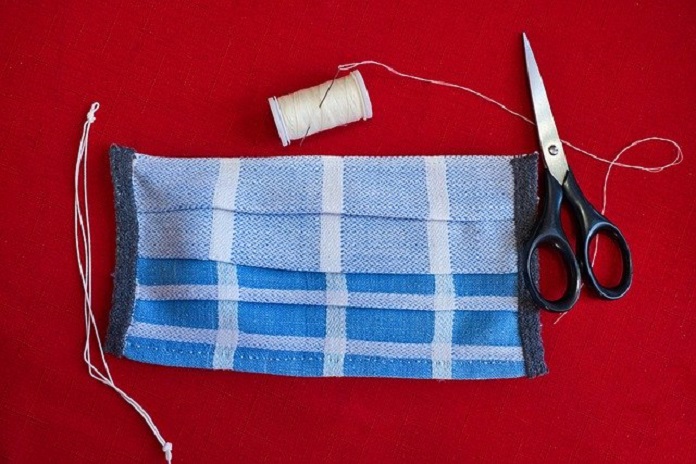Researchers compared different types of DIY face mask with surgical masks to assess their efficacy in reducing droplet dispersal from the nose and mouth.
SARS-CoV-2, the virus causing the COVID-19 pandemic, is spread by droplets expelled from infectious patients during speaking, coughing, and sneezing. Face masks reduce the spread of viral droplets from infectious people and may also protect healthy people from inhaling droplets. Many countries are now recommending the use of face coverings by the general public in situations where social distancing measures may be difficult, such as on public transport or in shops.
DIY face masks suggested as alternative to surgical masks for general public
Because of the need to ensure the adequate supply of medical-grade masks to healthcare staff and frontline workers, public health agencies such as the Centers for Diseases Control (CDC) in the United States have suggested the general public use cloth DIY face masks. Several types of materials and designs for DIY face masks have been suggested, but there is little evidence for how well they work. Researchers at the University of New South Wales, Australia, performed a video case study to compare different types of DIY face masks with surgical masks. They recently published their findings in Thorax.
Double-layer mask more effective than single-layer in reducing droplet dispersal
Using a healthy volunteer, the researchers compared the effectiveness of a three-ply surgical mask and single-layer and double-layer cotton cloth DIY masks in reducing droplet spread. The single-layer mask was made using a “quick-cut T-shirt no-sew” method and the double-layer mask was made according to the sew method described by the CDC. The researchers measured droplet expulsion using an LED lighting system and a high-speed camera to film droplet dispersal. The volunteer was filmed speaking, coughing, and sneezing wearing each type of face mask and also wearing no mask.
The surgical mask was most effective in reducing droplet spread during speaking, coughing, and sneezing. A double-layer cloth DIY mask was more effective a single-layer mask in reducing droplet spread during these activities, although even a single-layer mask had some benefit.
Recommendations should advise multiple layers
The study illustrates the value of using face masks and the differences between several types of masks. Although just a single case study, the researchers recommend that DIY mask instructions should advise using multiple layers of material (at least three), for people who are able to wear a mask. According to the CDC, “cloth face coverings should NOT be worn by children under the age of 2 or anyone who has trouble breathing, is unconscious, incapacitated, or otherwise unable to remove the mask without assistance.” The researchers also note that there are other factors that affect the usefulness of DIY masks including the type of material used, design and fit of masks, and frequency of washing. They say that there is a need for further studies to improve DIY mask design and use.
Written by Julie McShane, MA MB BS
References
1. Bahl P, Bhattacharjee S, de Silva C, et al. Face coverings and mask to minimize droplet dispersion and aerosolisation: a video case study. Thorax Published Online First: July 24 2020. doi:10.1136/thoraxjnl-2020-215748
2. BMJ Press Release, 23 July 2020. Home-made face masks likely need at least 2 layers to curb COVID-19 spread. https://www.eurekalert.org/pub_releases/2020-07/b-hfm072220.php
Image by Lukáš Jančička from Pixabay



